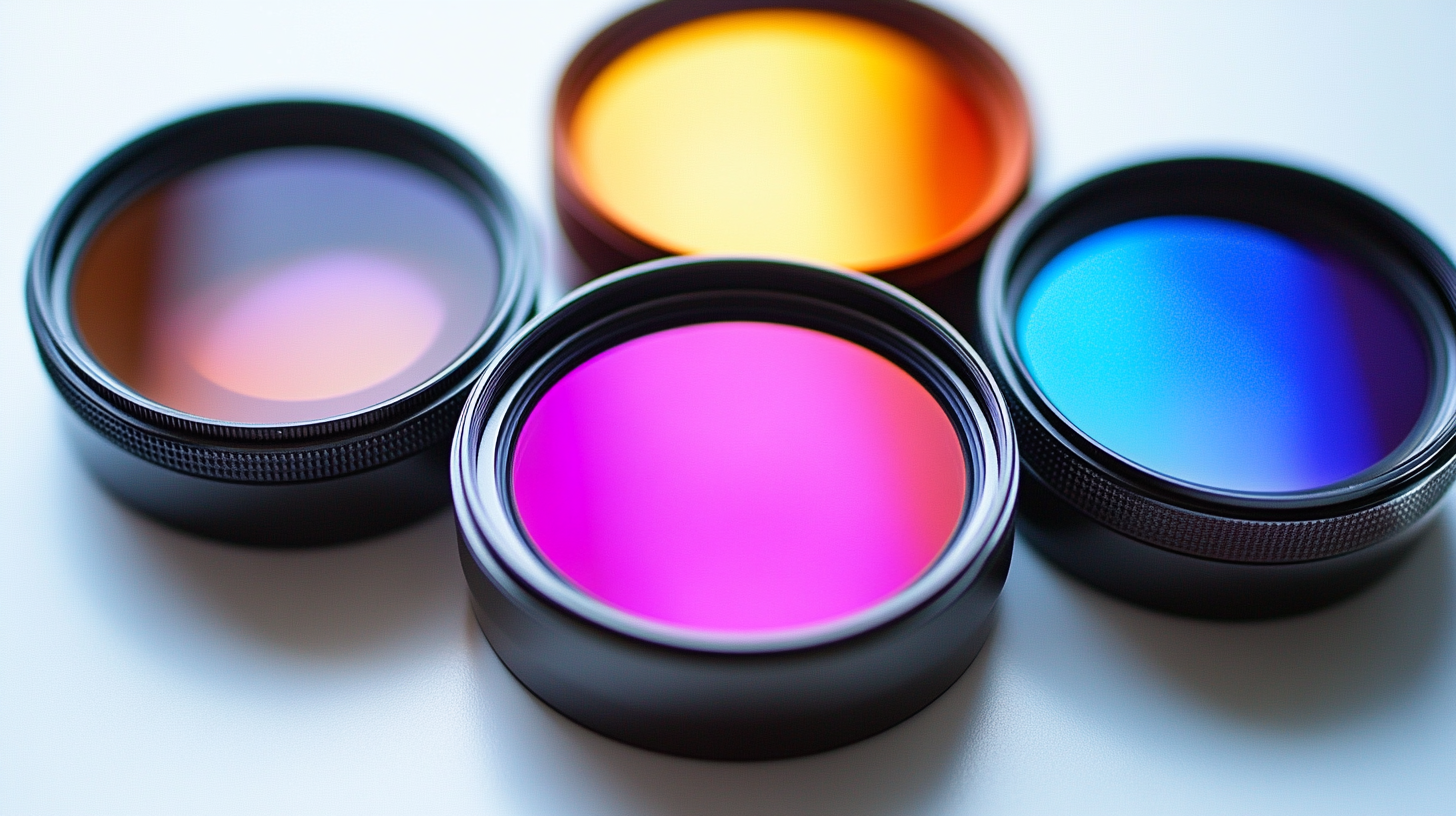In today's fast-paced world, the demand for versatile eyewear continues to grow, with Photochromic Lenses leading the charge in catering to both personal and business needs. According to a recent report by Market Research Future, the global photochromic lenses market is projected to reach USD 8.4 billion by 2023, reflecting an increasing recognition of their multifaceted advantages. Businesses across various sectors are beginning to understand that integrating these lenses into their offerings not only enhances customer satisfaction but also positions them ahead of competitors in the rapidly evolving eyewear market.
Incorporating Photochromic Lenses into business strategies can significantly boost sales, as over 60% of consumers prefer lenses that can adapt to varying light conditions, according to a survey by the Vision Council. This innovative eyewear solution is particularly appealing to outdoor professionals, which highlights a lucrative niche market for businesses to explore. By understanding and harnessing the unique benefits these lenses provide, companies can enhance their product line and elevate their brand reputation, ultimately contributing to sustained growth and customer loyalty.

Photochromic lenses, commonly known through brands like Transitions®, are a groundbreaking solution for anyone needing optical correction while requiring adaptability to various light conditions. The science behind these lenses hinges on photochromic compounds that react to ultraviolet (UV) light. When exposed to UV rays from the sun, the lenses darken, providing optimal visual comfort and UV protection. Studies reveal that over 75% of people wearing photochromic lenses experience an enhancement in visual acuity and comfort when transitioning between indoor and outdoor environments. An interesting aspect of photochromic lenses is their multifunctionality beyond just adjusting darkness. Recent innovations have also introduced temperature-responsive features, which allow lenses to react to thermal changes, further enhancing user comfort. This technology not only meets the needs of individuals who spend considerable time outdoors but also caters to business professionals who move frequently between different light settings throughout their workday. According to a report by the Vision Council, nearly 60% of eyewear users consider light adaptability as a crucial factor in their lens selection process. By adopting photochromic lenses, businesses can enhance employee productivity and reduce eye strain. Particularly in dynamic work environments, the ability of these lenses to shift seamlessly ensures that employees maintain high levels of focus without the distraction of glare or abrupt lighting changes. As the demand for adaptive eyewear continues to rise, integrating photochromic lenses into business optical solutions represents not just an investment in employee well-being but also an adherence to the latest advancements in lens technology.

Photochromic lenses, also known as transition lenses, offer a unique combination of convenience and protection that benefits both consumers and businesses. One of the primary advantages of these lenses is their ability to provide improved eye protection from harmful UV radiation. According to the World Health Organization, approximately 20% of all cataracts, one of the leading causes of blindness, are linked to prolonged UV exposure. This highlights the urgent need for protective eyewear in both personal and professional settings.
In addition to cataracts, exposure to UV rays has been associated with various other health impacts, including macular degeneration and photokeratitis, the latter often referred to as "sunburn of the eye." The American Academy of Ophthalmology emphasizes the importance of wearing sunglasses with UV protection to mitigate these risks. Photochromic lenses react to sunlight, darkening in bright conditions and providing an effective shield against UV rays, which can help reduce the cumulative exposure that leads to these serious health issues.
Statistics from the Vision Council indicate that 79% of adults are concerned about UV exposure. By incorporating photochromic lenses into their offerings, businesses can cater to this growing consumer awareness and demand. Not only do these lenses enhance customer satisfaction by providing comfort and versatility, but they also position a company as a proactive advocate for eye health. Investing in products that emphasize improved eye protection can ultimately lead to increased customer loyalty and a solid reputation in the eyewear market.

Photochromic lenses offer significant advantages for anyone looking to enhance visual comfort in professional settings. One of the most notable benefits is their ability to reduce eye strain and fatigue, which are common issues in today’s screen-driven world. By automatically adjusting to various lighting conditions, these lenses provide optimal clarity, allowing users to transition seamlessly from bright indoor environments to harsh outdoor sunlight without needing to switch glasses.
Research has shown that a majority of individuals using photochromic lenses report a noticeable decrease in eye strain throughout their workday. This is particularly important for those working long hours in front of computers or under fluorescent lighting, as extended exposure to such conditions can lead to discomfort and fatigue. The adaptive nature of photochromic lenses minimizes glare and enhances contrast, making it easier to focus on tasks without the constant need to squint or adjust visual settings.
Moreover, the reduction in eye fatigue doesn't just improve comfort; it can also boost productivity. When employees experience less strain, they are likely to maintain higher levels of concentration and efficiency throughout their day. This translates into better performance and overall satisfaction in the workplace. As businesses seek ways to support their employees' well-being and effectiveness, incorporating photochromic lenses into their eyewear policies could be a transformative step.

Photochromic lenses have become increasingly popular for businesses looking to enhance employee well-being while also considering cost-efficiency. According to a 2022 report from the Vision Council, businesses that invest in employee eye care, including photochromic lenses, see an average return on investment (ROI) of 4:1. This statistic underscores the importance of prioritizing eye health, as it directly correlates with increased productivity and reduced health-related absenteeism.
In addition to the direct benefits of improved vision, photochromic lenses can significantly reduce overhead costs related to eye care. A study by Market Research Future estimates that up to 30% of employees experience eye strain or discomfort due to environmental factors, leading to increased use of sick days. By equipping employees with photochromic lenses that adapt to varying light conditions, companies can mitigate these issues. The lenses offer protection against harmful UV rays, thereby decreasing the number of eye-related conditions that can arise from prolonged exposure—resulting in substantial healthcare savings.
Moreover, the initial investment in photochromic lenses is typically recouped through lower insurance premiums and fewer claims related to vision issues. A Spring 2023 report from the American Optometric Association revealed that businesses that provide comprehensive vision care tend to have reduced worker compensation claims by approximately 20%. Therefore, integrating photochromic lenses into workplace policies not only enhances employee satisfaction but is also a financially savvy decision for long-term sustainability.
Photochromic lenses are becoming increasingly essential across various industries due to their ability to adapt to changing light conditions. In environments such as manufacturing, healthcare, and outdoor fields, these lenses provide workers with the versatility needed to ensure safety and comfort. For instance, in outdoor construction, workers often transition between bright sunlight and shaded areas; photochromic lenses darken in the sun to reduce glare while remaining clear indoors, thus enhancing visibility and reducing eye strain.
A report by the Vision Council indicates that approximately 70% of workers experience visual fatigue, which can lead to decreased productivity. By incorporating photochromic lenses into workplace safety gear, employers can mitigate this issue, ultimately leading to a more comfortable workforce. This shift not only protects workers’ eyesight but could potentially enhance job performance; data suggests that improved comfort can increase productivity by up to 25%.
Furthermore, photochromic technology is also gaining traction in the healthcare sector, where eye care professionals recognize its benefits for staff working in environments with stark lighting contrasts. By providing eye protection that adapts seamlessly, these lenses help maintain focus and reduce the risk of accidents in critical situations, such as in surgical theaters. With the growing body of evidence supporting their effectiveness, it’s clear that photochromic lenses are a valuable asset in optimizing workplace efficiency across diverse industries.

